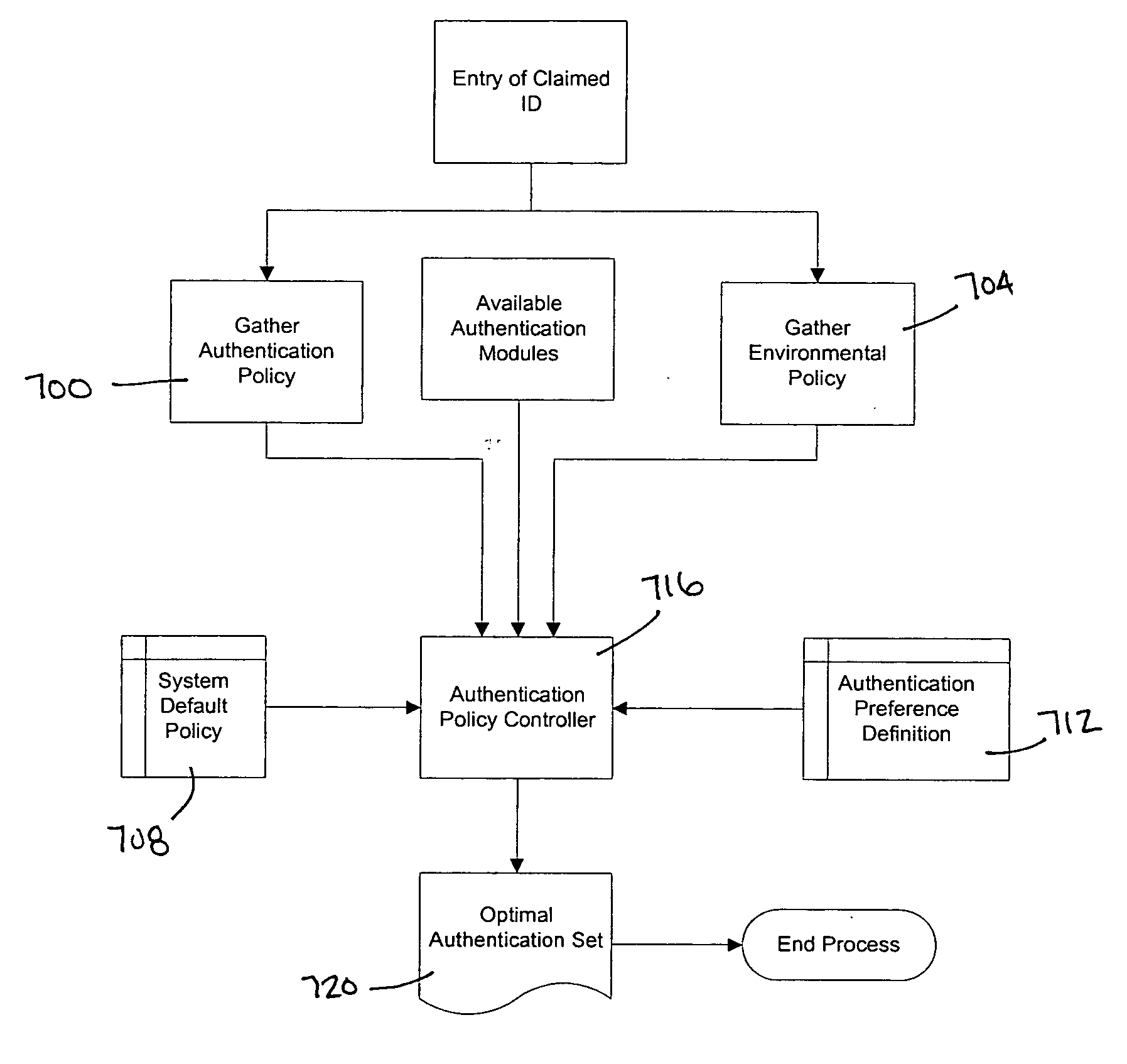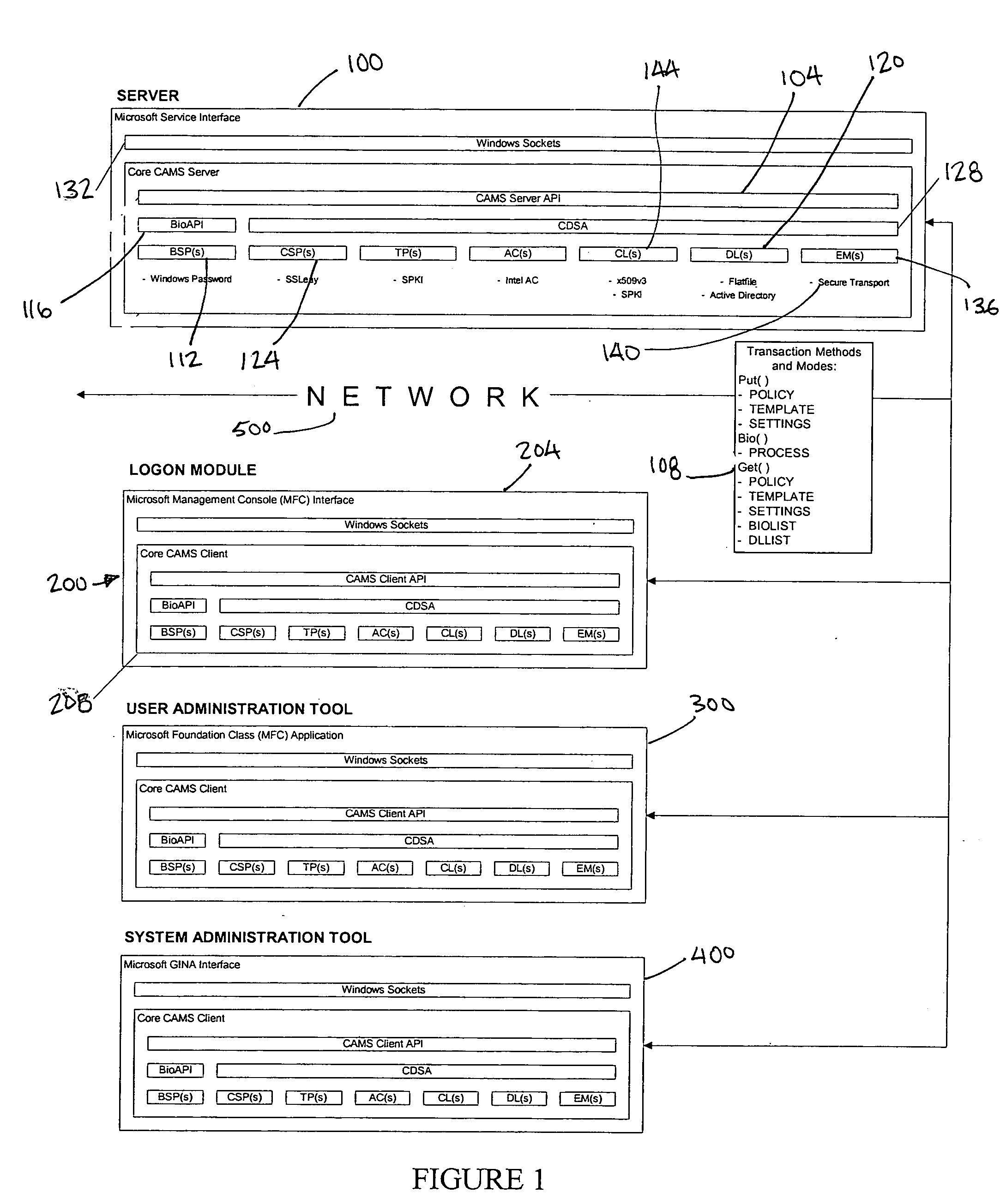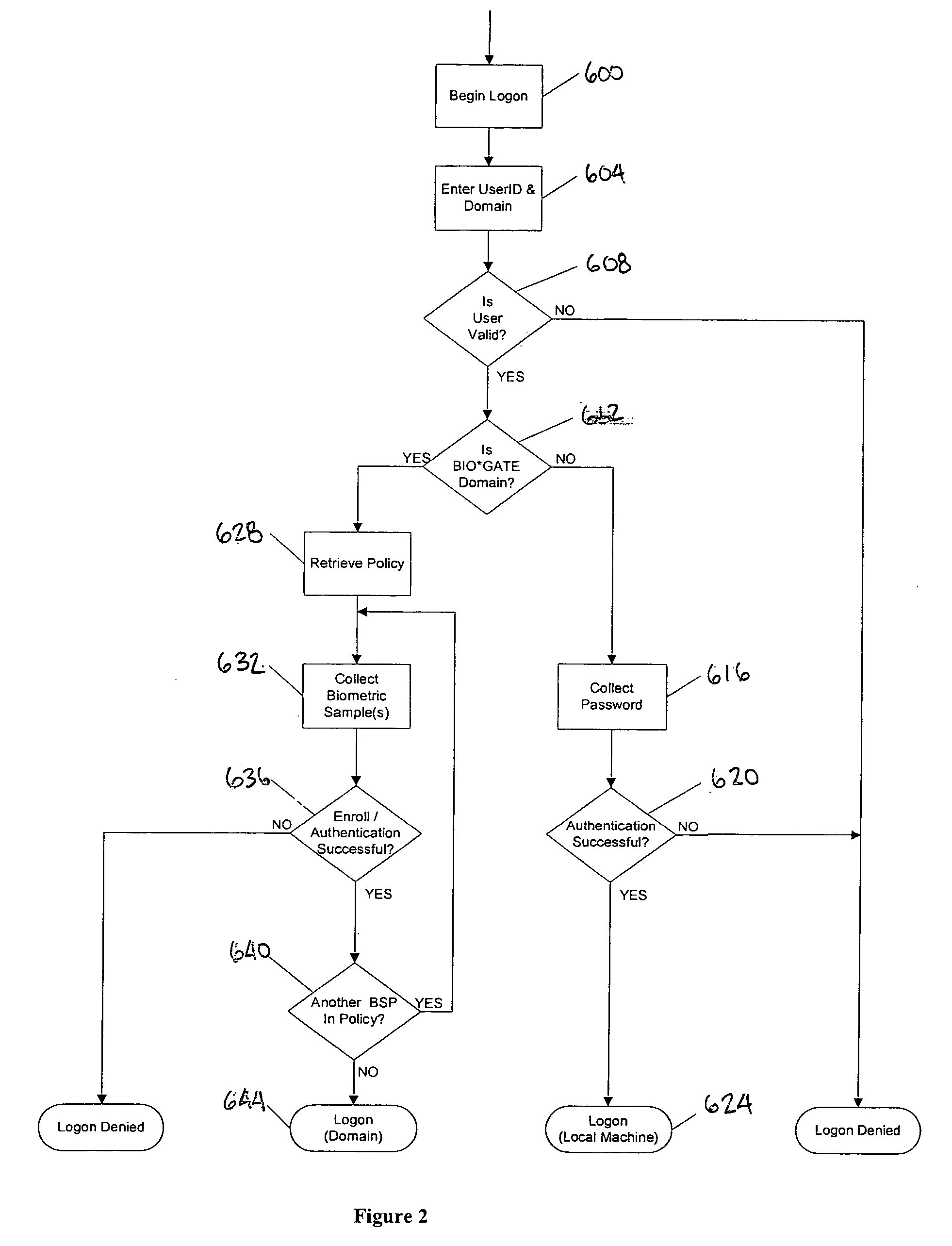Biometric authentication system
a biometric authentication and biometric technology, applied in the field of biometric authentication systems, can solve the problems of not being able to easily be guessed by an unauthorized person, presenting many risks, and complex passwords
- Summary
- Abstract
- Description
- Claims
- Application Information
AI Technical Summary
Benefits of technology
Problems solved by technology
Method used
Image
Examples
Embodiment Construction
[0043] Referring to the drawings and, in particular, to FIG. 1 thereof, the authentication system of the present invention is provided and is referred to generally by reference numeral 10. The functionality of the invention is basically contained in four discreet components: the server 100, the logon module 200, the user and system configuration 300 and administration utilities 400. The server 100 is the central component for the system and handles requests for data and services from the other components. The logon module 200 provides the interface between the users and the protected system and facilitates the users' authentication onto the network. The user administration tool 300 allows for the configuration of users' authentication policy and management and creation of the users' biometric templates. Finally, the system administration tool 400 provides for the selection of the database the system uses to store, the configuration of the global default authentication policy and oth...
PUM
 Login to View More
Login to View More Abstract
Description
Claims
Application Information
 Login to View More
Login to View More - R&D
- Intellectual Property
- Life Sciences
- Materials
- Tech Scout
- Unparalleled Data Quality
- Higher Quality Content
- 60% Fewer Hallucinations
Browse by: Latest US Patents, China's latest patents, Technical Efficacy Thesaurus, Application Domain, Technology Topic, Popular Technical Reports.
© 2025 PatSnap. All rights reserved.Legal|Privacy policy|Modern Slavery Act Transparency Statement|Sitemap|About US| Contact US: help@patsnap.com



